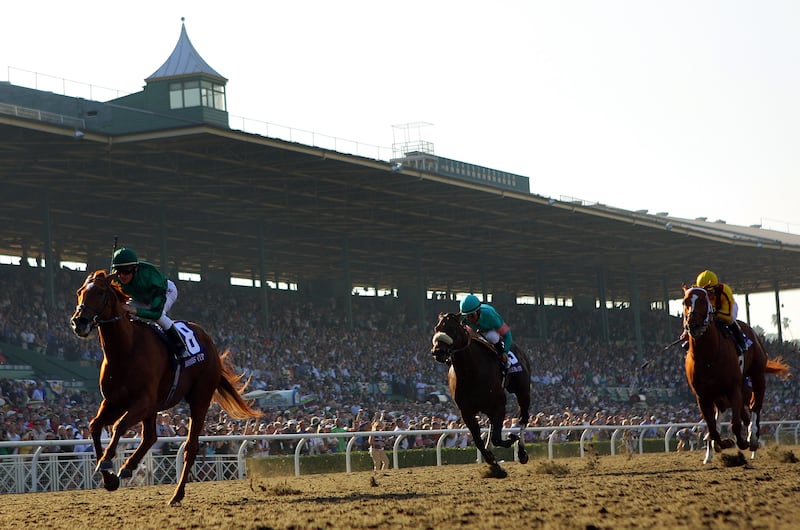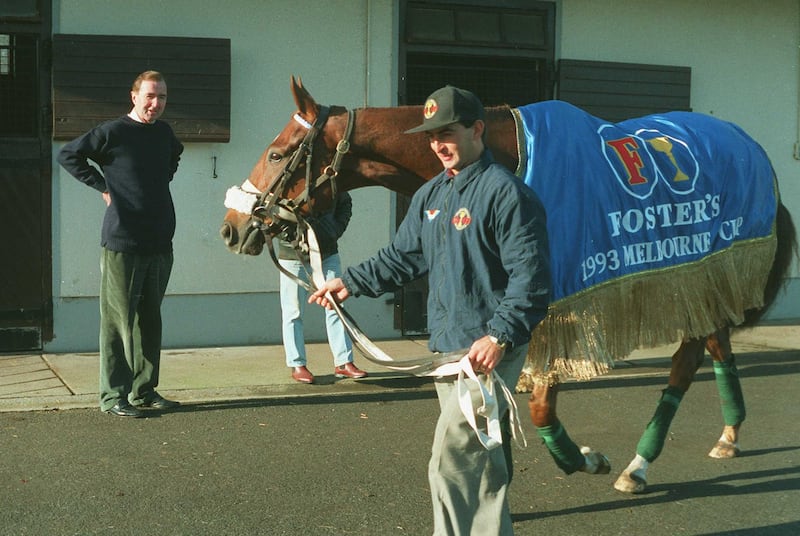Just how much of a village global racing has become is underlined by a pair of notable anniversaries sure to keep followers of the sport worldwide enthralled over the coming days.
Tonight sees the 40th Breeders’ Cup kick off at Santa Anita in Los Angeles, a $31 million two-day extravaganza that the Americans, with typical bravado, label a “World Championships” but which actually does come as close to such an impossible concept as anything ever has.
Forty years is no mean feat for an idea of concentrated excellence widely decried back in 1984 when the first Breeders’ Cup took place at the now defunct Hollywood Park, one designed as a year-end-championships to be sold to an American market falling out of love with the game.
If success is to be judged by having reversed that, then the Breeders’ Cup has failed. On the back of a sorry history of welfare disasters and, particularly, a shameful readiness to plough its own disreputable furrow on drugs, US racing is still struggling in a reputational quagmire.
READ MORE
That, however, has far more to do with a dire lack of political will within the wider industry as well as a chronic failure to appreciate how the sport’s long-term sustainability is bound up in making every effort to make it as clean as possible.
The old dig about the ‘Bleeders’ Cup’ being the most apt label of all for this weekend’s action still rings too true for reassurances about corners having been turned to be swallowed whole. But it’s possible to argue that annual Breeders’ Cup exposure to international standards has made any pace of change slightly less glacial than it might otherwise have been.

Nevertheless, there’s never been any doubt this is a US show for a US market. European and Japanese runners add piquancy, but the substance is all-American apple pie, no matter how crusty some of the edges are. It mightn’t thrive without overseas visitors but would still survive.
It’s 30 years since any similar isolationist instincts on the other side of the world got blown out of the water forever.
For over a century, the Melbourne Cup, perhaps Australia’s most coveted sporting prize and the race that famously stops a nation, was a domestic affair. Kiwis crossed the Tasman Sea, but the geographical distance to anywhere else made it a strictly private party.
That such an environment generated a sense of self-confidence is no surprise to anyone familiar with Australian sport. That Dermot Weld wasn’t dissuaded from the greatest single feat of international daring ever seen in racing didn’t surprise anyone familiar with the Curragh trainer.
The vision, organization and ambition required to get Vintage Crop to Flemington in 1993 and pull off what the Aussies were sure was an impossible task still counts among the most startling of coups.
Every local norm and convention got turned on its head. Vintage Crop hadn’t raced in six weeks, an impossible gap to conceive of for locals used to racing their best hopes just a few days before the Cup. The Irish horse was barely past the post before presumptions were being tossed aside like losing dockets.

Visitors fortunate enough to be at Flemington that day still recall the stunned domestic reaction to a world both shrinking and being turned on its axis in front of them. Within a decade, Weld won it again with Media Puzzle. Since then, other horses trained in Ireland, France, Britain, Germany and Japan, have taken the Cup for export.
Faced with the reality that in comparison to European stayers, Australia’s best usually were left gasping for air once past a mile and a quarter, the local market for northern hemisphere contenders expanded at a rate of knots. Faced with a case of adapt or die the outcome is a historic Australian institution with a new global perspective.
Three decades later and the Willie Mullins trained Vauban is favourite to pull off what would be an apt success in the circumstances. Should he win, it might also serve as a reminder of racing having always had a worldwide aspect.
In 1849, George Watson left his home in Carlow – just four miles from where Mullins now trains – and headed for Melbourne never to return. Over the next 56 years, he was instrumental in the growth of Australian racing, including helping to establish the Victoria Racing Club which ran the first Melbourne Cup in 1861. Watson was the official starter of that race.
Mullins has spoken of taking the Cup “home” but the digital age means modern racing is something most anyone can watch on their couch no matter where. Santa Anita can be as familiar a TV spectacle as Sandown. Betting on Flemington is just a swipe away from Fairyhouse.
It’s a world so tiny that it must make greater standardization all but inevitable, particularly in relation to drugs. Racing might be a village but there’s nothing like outside expectations to buck up ideas at home.
Something for the Weekend
Aidan O’Brien cracked the Juvenile Fillies Turf code a year ago with Meditate and 15-1 Morning Line odds in the US look big about his hope CONTENT (10.20) tonight. She was a surprise 20-1 winner of a Curragh Group Three on soft ground but crucially looked good coming from off the pace. A US tempo race could set her up perfectly.
O’Brien’s perseverance might get rewarded in Saturday night’s Turf Sprint with the enigmatic AESOP’S FABLES (11.25.) He has looked a busted flush for much of the season, but the application of blinkers saw him take a significant jump forward when third in the Abbaye last month. The former high-class juvenile could spit it out completely - or might just relish this quirky downhill challenge.


















